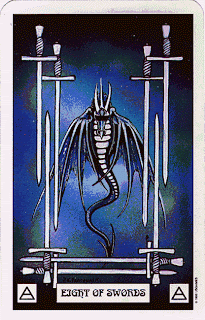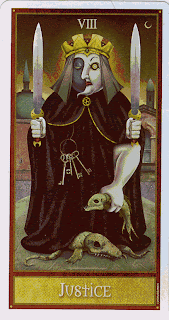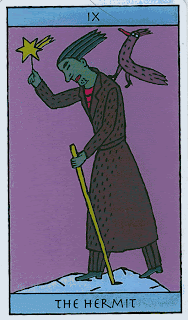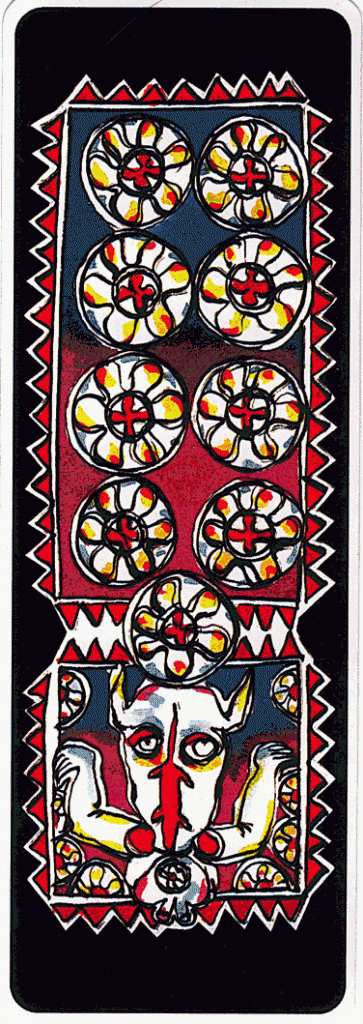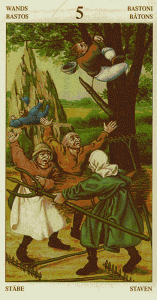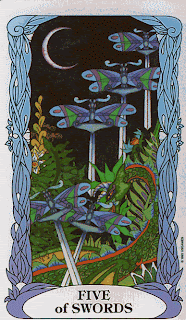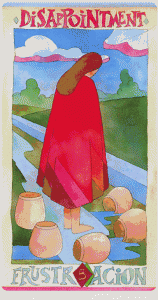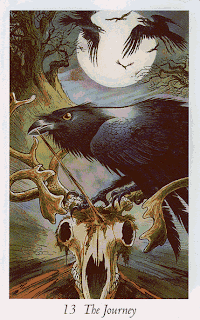
Artist: Will Worthington
Authors: Mark Ryan & John Matthews
This card corresponds to the Death card in the Marseille Tarot.
“The first step is to ask the initial question,” write the authors. “This is the most overlooked part of any divinatory system… the act of asking focuses the mind. The desired answer or even the real question itself may be buried so deep in our own subconscious that we need the help of Tarot to reflect our own unknowable truth.”
The truth is, I have not been asking a question other than which card will it be? what will it show me? When I pull cards for this blog, I am not searching for insight. I merely seek the ability to understand the cards more thoroughly. But if I want to get a better answer, I have to ask a better question.
This deck has caught me unawares. The book is extremely well written. I do not just want to jump to the card and see what it means. I want to read the book, understand where the authors are coming from, and move from there. I am the sort who reads instruction books cover-to-cover. I hope my book will be so enticing to others.
From the book—
It is time to face the inevitable, to let the bones be laid bare and acknowledge the deepest aspects of your fears and desires. Do not fear change, because this is also a time of purification and realignment. This change may seem extreme and destructive, but old crops must be cleared for new growth to thrive and static or sterile modes and concepts must perish. A celebration of the past or an acknowledgement of the passing of one part of life may be required. Let the threads of the old slip from your fingers with joyful remembrance and enter this time of withdrawal and renewal with patience and calm.
I had trouble calling my death card “finished” for a long time. I was trying to illustrate death as something that begins in childhood and grows with life. Death is there all along; it is nothing new. I drew people of three ages dancing with snakes that grew with them, both the snakes and the people enjoying life. Death enjoys life. Over and over, death enjoys life. Still, something was missing. That something was death itself, a fourth stage of life, like the four seasons of the year. When I added the skull, death became complete. I was not afraid that death was part of life; I was afraid that death was part of death.
Here is a celebration. Before the birth of my child, celebrate the death of my self: my selfish-self: my self who wanted to be only-self for so many years and had “too much to” do to be devoted to another self. I think it would be a good thing: to say good-bye thoroughly to what I no longer need, that I might greet with purity what I desire.
I am excited for this death and birth of life.





